Introduction to Mehndi: A Cultural Overview
Mehndi, often referred to as henna, is a form of body art that has its roots in ancient traditions across various cultures, with a pronounced significance in South Asia. The practice is not merely aesthetic; it symbolizes joy, celebration, and the embellishment of the body for special occasions.



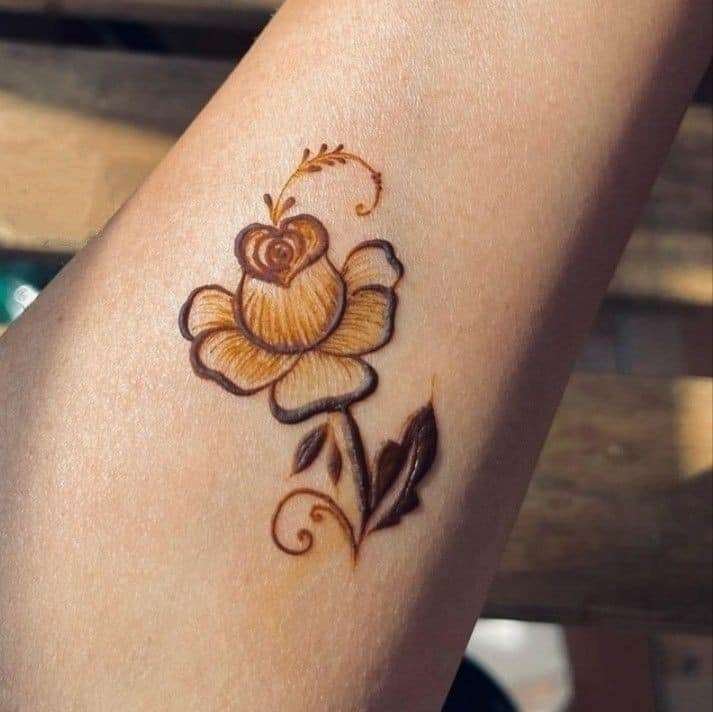







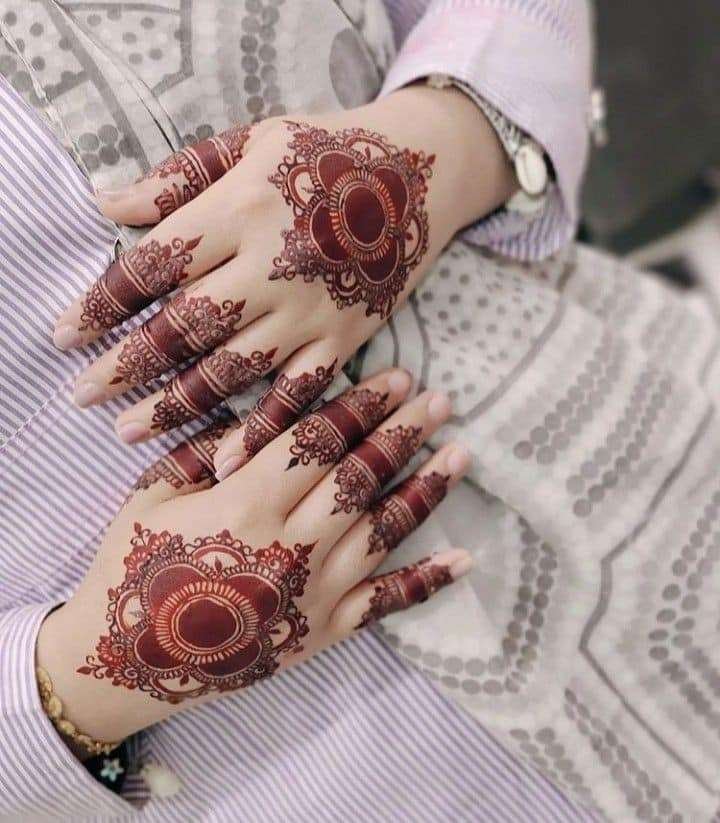



Historically, mehndi has been used in major life events, predominantly weddings, where intricate designs are applied to the hands and feet of brides. This art form enhances the beauty of the bride, reflecting her elegance while connecting her to cultural heritage. Mehndi Designs







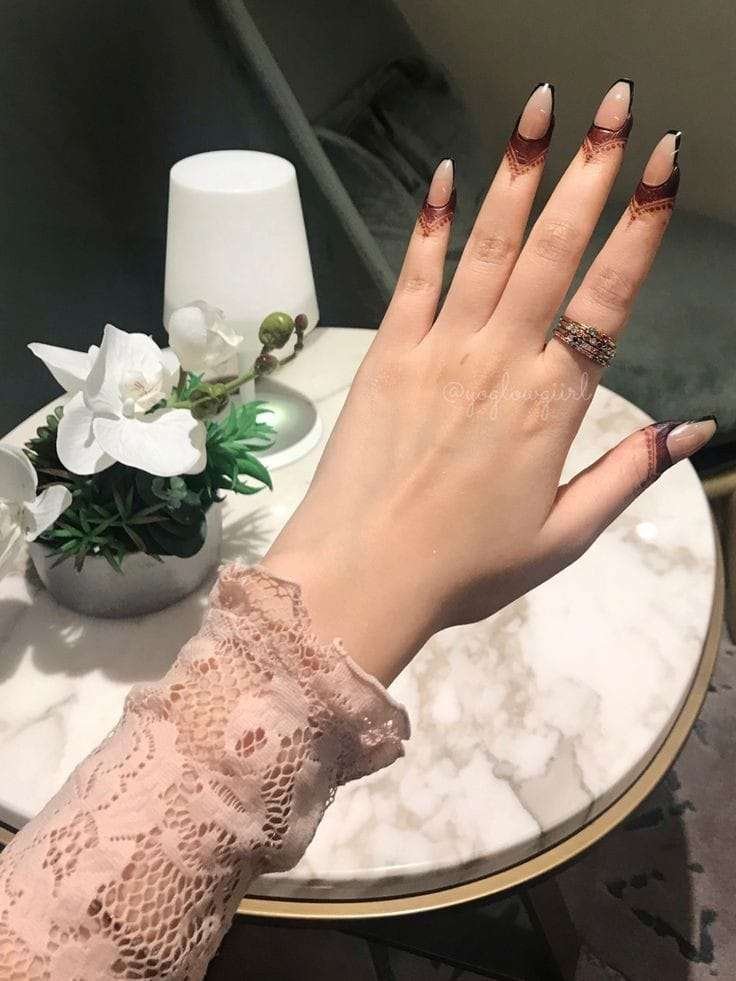


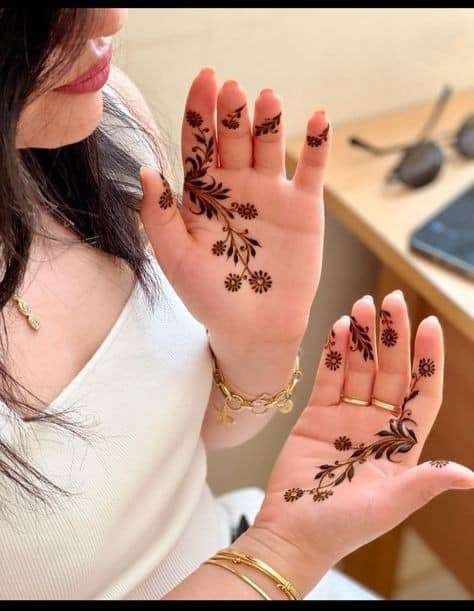




The application of mehndi transcends personal adornment. In South Asian cultures, it is associated with various festivals, such as Eid and Diwali, further embedding the art into the fabric of social gatherings. Families come together during these events to experience the communal joy of decorating one another’s hands. The rich, earthy tones of henna paste, derived from the leaves of the henna plant, are not only visually appealing but also carry symbolic meanings of love, fertility, and auspiciousness.





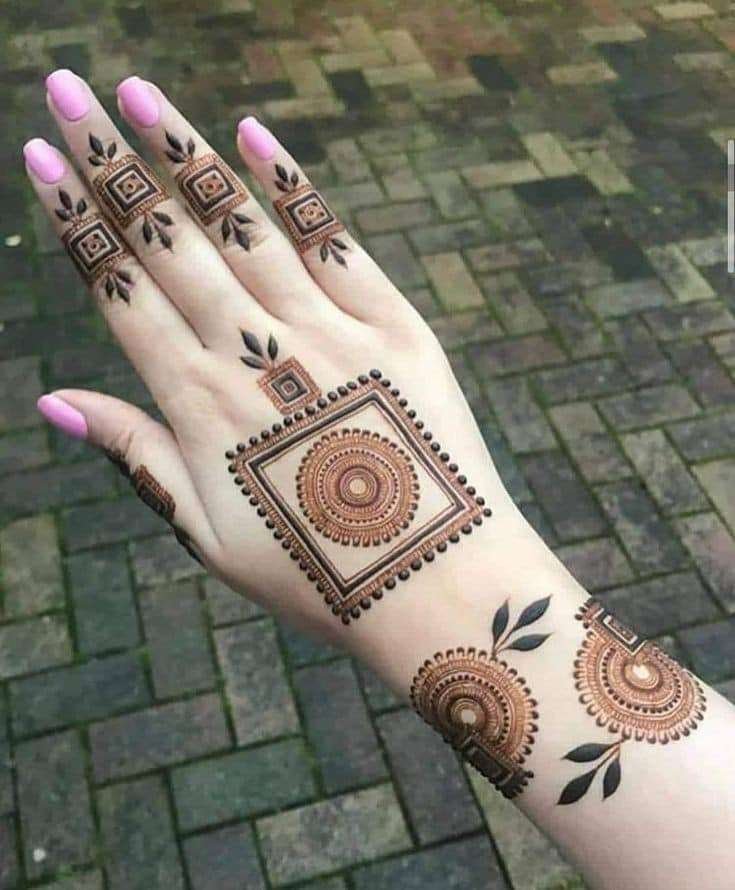









Across different societies, the motifs and patterns vary, illustrating a delightful mix of artistic expression and cultural storytelling. For instance, in Indian traditions, floral and peacock designs are prevalent, while in Middle Eastern cultures, geometric patterns may dominate. This diversity in design reflects the local customs and values associated with mehndi. The artistry of mehndi serves as a testament to the skills of the artists, whose many hours of practice culminate in stunning backhand designs. These patterns, often featuring elaborate detailing, are a direct representation of the cultural importance attached to mehndi, establishing it as an essential element in celebrations and rites of passage. Mehndi Designs















The Art of Backhand Mehndi Designs: Techniques and Styles
The application of Mehndi, a form of body art that utilizes henna, is an intricate and culturally significant practice in various societies. In particular, backhand Mehndi designs have become increasingly popular due to their visibility and aesthetic appeal. The techniques employed in crafting these designs encompass a variety of styles and artistic elements, including intricate patterns, floral motifs, and geometric shapes Mehndi Designs.



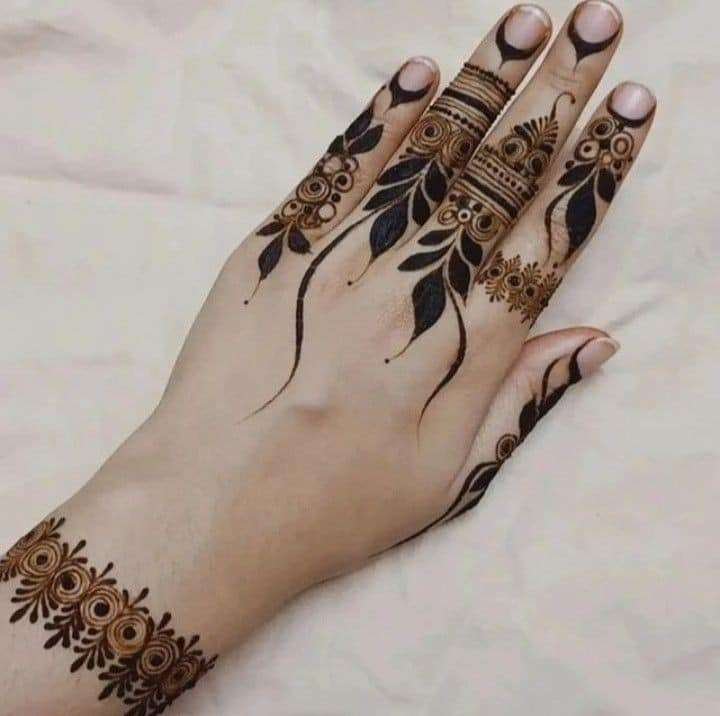











One of the most timeless techniques in backhand Mehndi art is the use of intricate patterns, which often reflect the artist’s skill and imagination. These complex designs can include a combination Mehndi Designs of spiral motifs, interwoven lace patterns, and delicate line work that flow seamlessly across the back of the hand. Such techniques require a steady hand and a discerning eye for detail, allowing artists to create breathtakingly beautiful pieces that captivate the viewer.
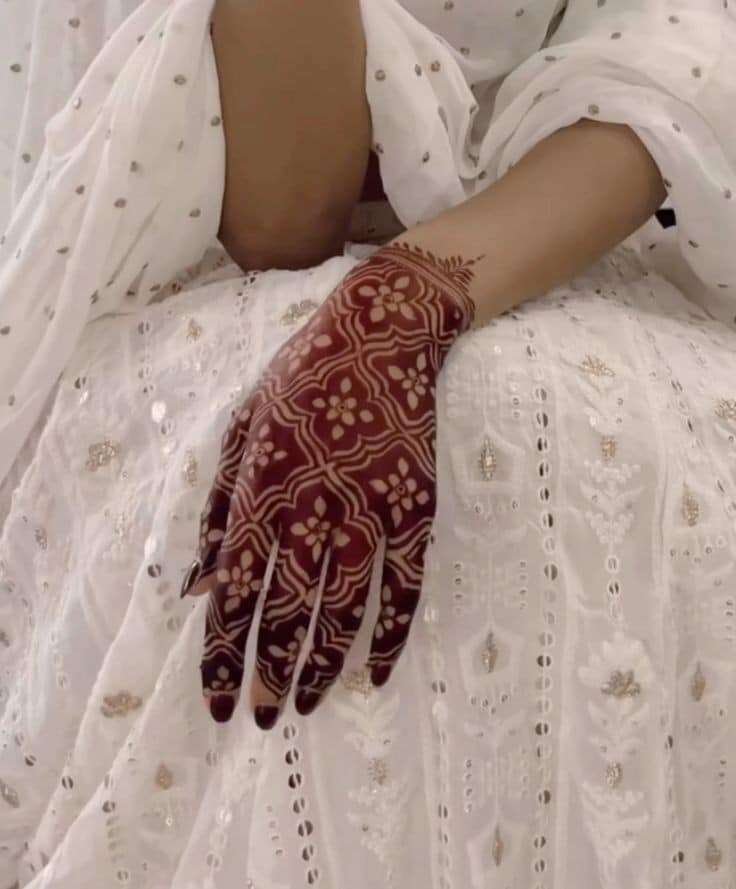









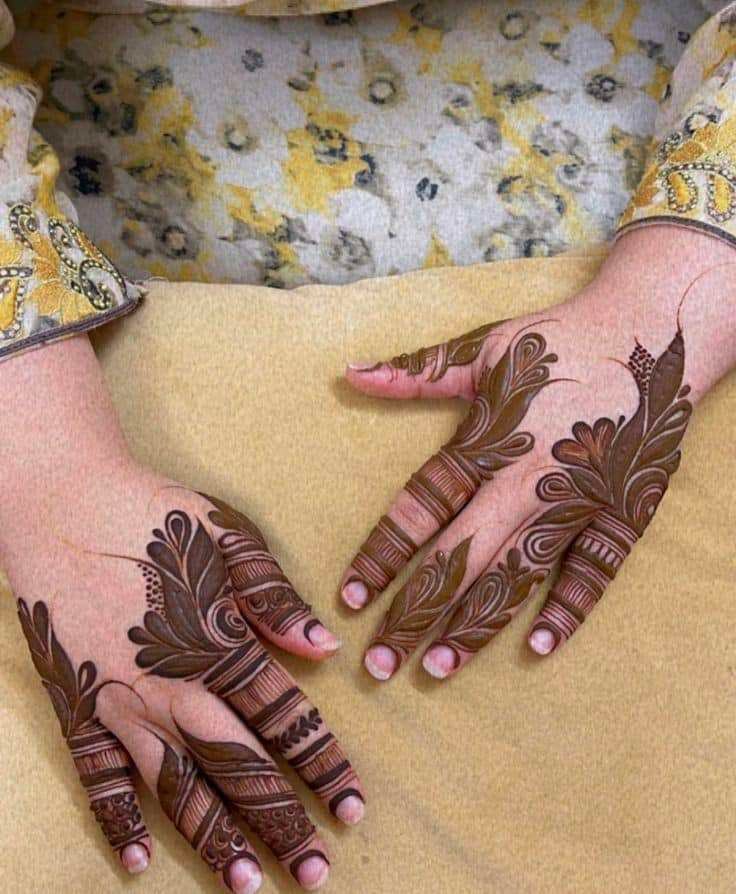




Floral motifs also play a pivotal role in backhand Mehndi designs. Flowers like roses, lotus, and jasmine are commonly depicted in various forms, symbolizing beauty and new beginnings. These botanical elements can be intertwined with other designs, offering a harmonious balance and enhancing the overall intricacy of the Mehndi. Contemporary artists often explore different interpretations of floral motifs, integrating stylized shapes and bold colors to create unique statements.















In contrast, geometric shapes present an alternative approach to Mehndi art, appealing to those who prefer modern aesthetics over traditional designs. Lines, squares, and circles are employed to create symmetrical patterns that exude a sense of order and sophistication. This geometric style often combines with other elements, allowing for versatility in design and personalization according to individual preferences.
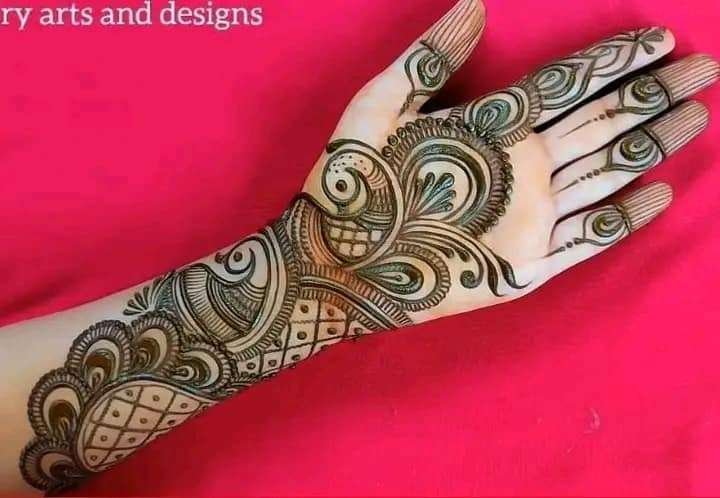


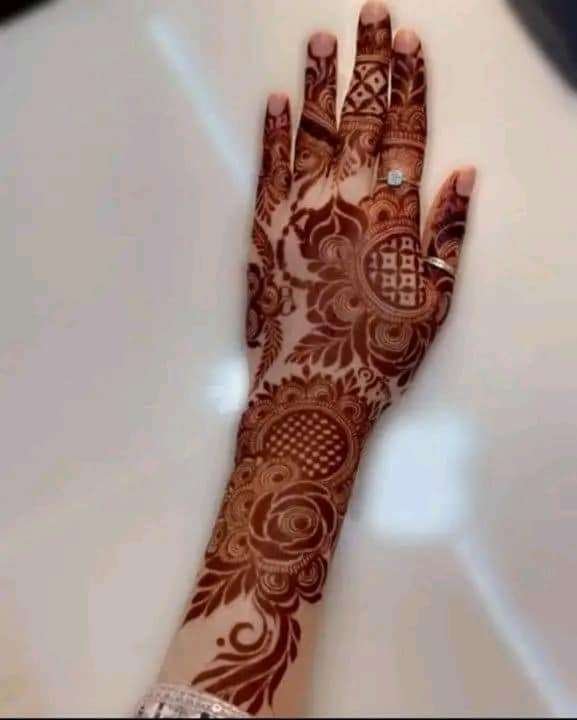



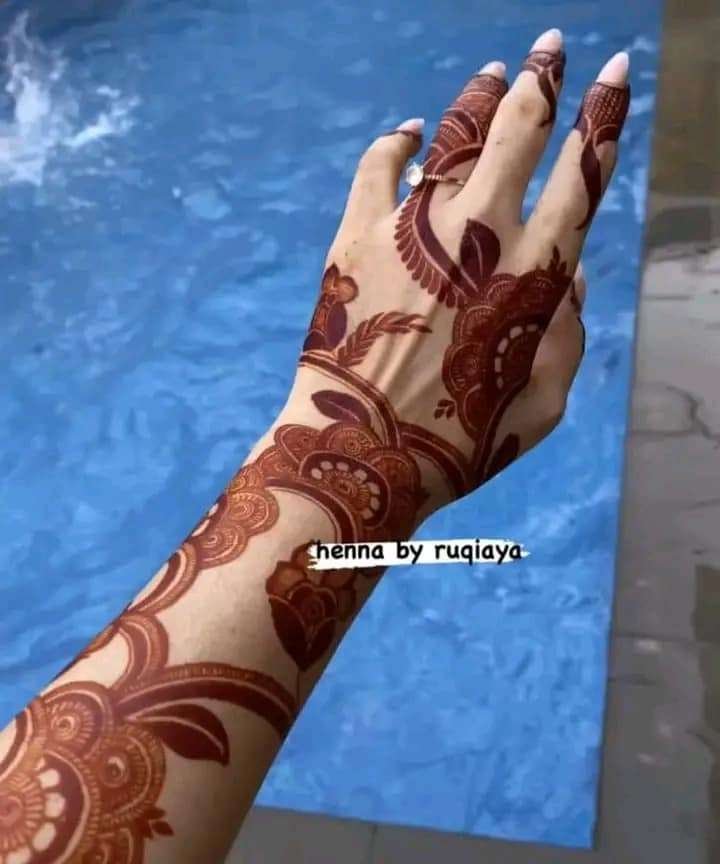





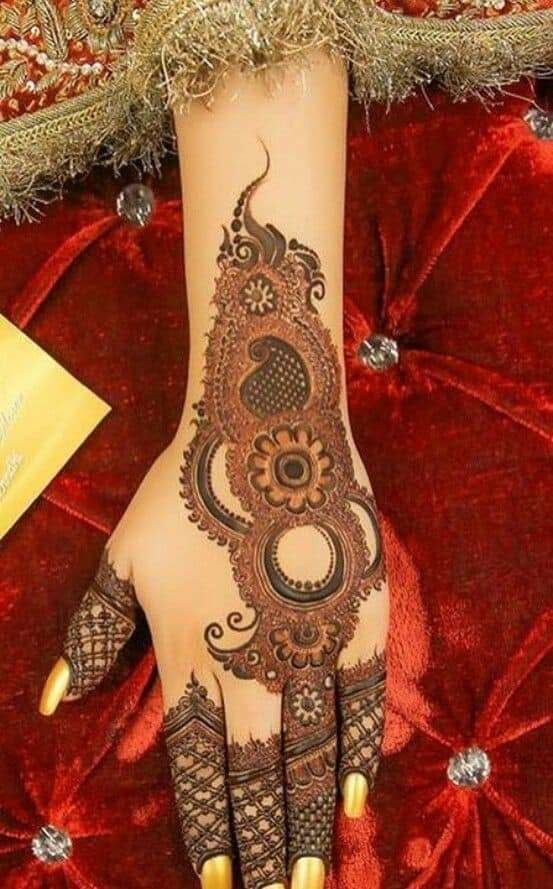

Traditional, contemporary, and fusion styles of backhand Mehndi all offer their unique charm. Traditional Mehndi, with its rich history, is characterized by dense and elaborate designs, whereas contemporary styles embrace minimalism and innovative concepts. Fusion designs blend elements from different cultures or art forms, resulting in a captivating medley that resonates with diverse audiences. Together, these various techniques and styles enrich the world of backhand Mehndi, transforming it into a cherished form of expression.















Popular Backhand Mehndi Designs: A Picture Gallery
In recent years, backhand Mehndi designs have gained immense popularity, serving as captivating artwork that adorns the skin. The intricate details and cultural significance embedded in these designs make them a favorite among brides and clients alike. Across various cultures, Mehndi is not only a form of adornment but also a symbol of joy and celebration, often associated with weddings and festivals.















This curated collection showcases an array of stunning backhand Mehndi designs, each offering unique flair and inspiration. One notable design features elaborate floral patterns complemented by delicate vines, drawing on nature’s beauty. The use of fine lines and shading adds depth, transforming the backhand into a stunning canvas. Such intricate floral motifs symbolize love and friendship within the cultural context of Mehndi.


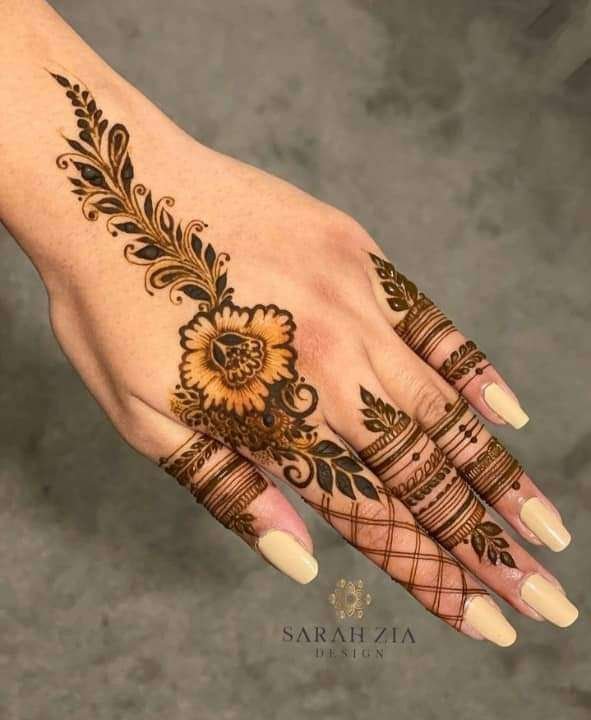












Another popular design showcases geometric patterns intertwined with paisley elements. This contemporary style emphasizes symmetry and precision, often favored by modern brides. The geometric shapes reflect a blend of tradition and modern aesthetics, making this design a versatile choice for various occasions. The varying sizes of the patterns further enhance visual interest, allowing for customizable placements that cater to individual preferences.
Additionally, cultural symbols, such as peacocks and elephants, are often featured, reflecting heritage and grace. These elements are not merely decorative; they represent strength and beauty, encapsulating the sentiments of the wearer. The use of bold colors in certain designs infuses liveliness, aligning with festival themes, where vibrant Mehndi serves to enhance celebrations.















In essence, backhand Mehndi designs stand out as a form of artistic expression, intertwining tradition and modern interpretations. The images presented in this gallery reflect the diversity and elegance of these designs, capturing the essence of joy and creativity that Mehndi embodies.
Choosing the Right Backhand Mehndi Design for Your Occasion
Selecting the perfect backhand Mehndi design is an essential step in preparing for any celebration. The ideal design not only complements personal style but also resonates with the nature of the event being attended. Various occasions demand different styles and intricacies; thus, understanding the nuances associated with each event can help in making a well-informed choice.



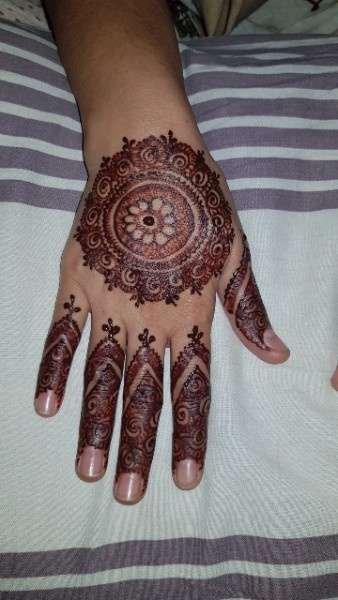











For weddings, intricate and elaborate designs are often favored, as they symbolize beauty and festivity. Traditional bridal Mehndi may include motifs that tell stories or represent cultural significance, rich in symbolism. For brides, backhand Mehndi designs might feature detailed patterns, florals, and decorative elements wrapped around the wrist, drawing attention to the hands. Special occasions like engagement ceremonies may warrant moderately intricate designs, blending opulence with elegance.















When it comes to festivals, the choice of Mehndi design can shift based on the spirit of the celebration. For example, during Eid, lighter and more playful patterns are embraced. Here, floral designs or geometric shapes can add cheerfulness to the day. In contrast, a family gathering may call for simpler Mehndi applications, allowing for a balance between understated elegance and celebration.
Moreover, skin tone should be considered when selecting Mehndi designs. Individuals with fair skin may choose bold designs to create a striking contrast, whereas those with darker skin tones often find that intricate patterns display more vividly. Additionally, personal style is vital; those who lean towards modern aesthetics might prefer minimalist designs, while traditionalists may opt for classic, heavy patterns. Ultimately, choosing the right backhand Mehndi involves harmonizing these elements, ensuring the design reflects individuality and occasion alike.
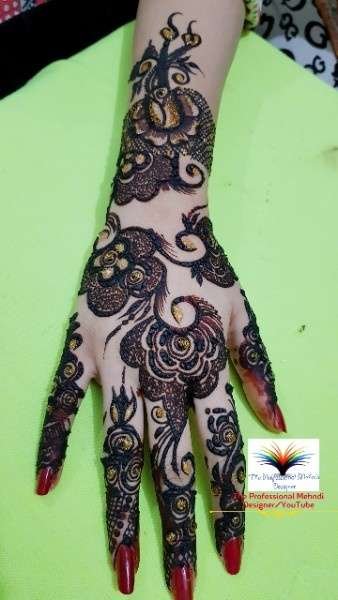













Tips for Applying Backhand Mehndi Designs at Home
Applying backhand mehndi designs at home can be a rewarding experience, allowing individuals to express their creativity while enjoying a traditional art form. To begin, proper skin preparation is essential for achieving the best results. Start by washing your hands thoroughly with soap and water to eliminate any oils or dirt. Once your skin is clean, gently exfoliate the area where the mehndi will be applied. This can be done using a mild scrub or a mixture of lemon juice and sugar, which not only cleanses the skin but also helps the henna stain to adhere better.
Choosing the right henna cone is crucial for a successful application. Look for quality cones that contain natural henna without harmful additives. Checking the ingredient list can help ensure that the product is safe and effective. If possible, opt for freshly prepared henna as it typically produces richer and longer-lasting stains. Before applying the mehndi, take a moment to practice your designs on a piece of paper or an inconspicuous area of your skin to gain confidence in your technique.

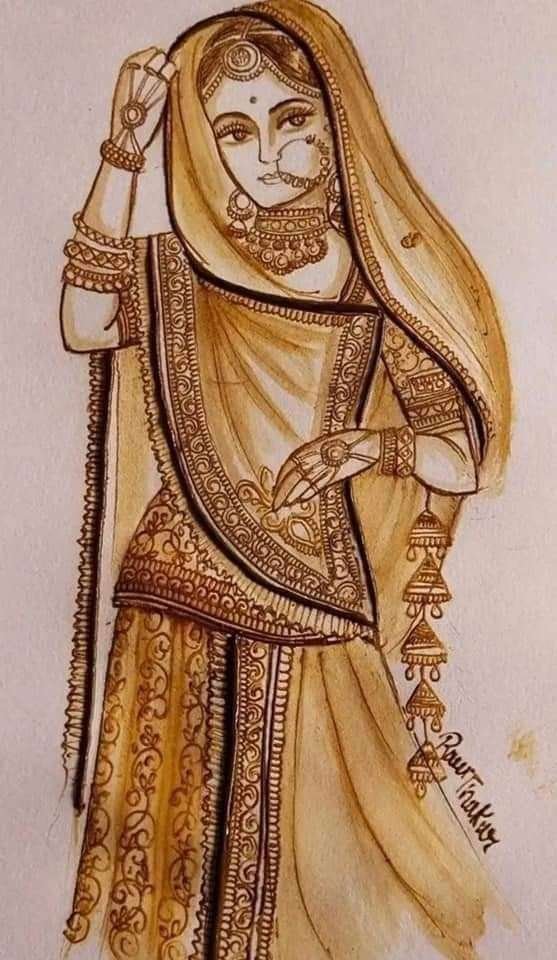













When it comes to application techniques, start with the outlines of your design and gradually fill in the details. Use a steady hand and maintain an even pressure on the cone for a consistent line thickness. For intricate designs, utilizing a fine-tipped cone can enhance the precision of your strokes. Once the mehndi is applied, allow it to dry completely without disturbing the design. To enhance the color of the stain, consider wrapping the area with tissue or plastic wrap, and avoid contact with water for at least 6 hours. The longer the mehndi stays on, the darker the stain will be. Aftercare is also essential; gently remove any dried henna with olive oil, and avoid washing the area with soap for prolonged stain intensity. Following these tips will help ensure a beautiful backhand mehndi design that lasts longer.















Symbolism Behind Common Backhand Mehndi Patterns
Mehndi, or henna, is not merely an art form; it embodies profound symbolism rooted in cultural traditions. Among the patterns commonly found on the backhand, elements such as peacocks, paisleys, and floral designs hold significant meanings that reflect sentiments of love, fertility, and prosperity.






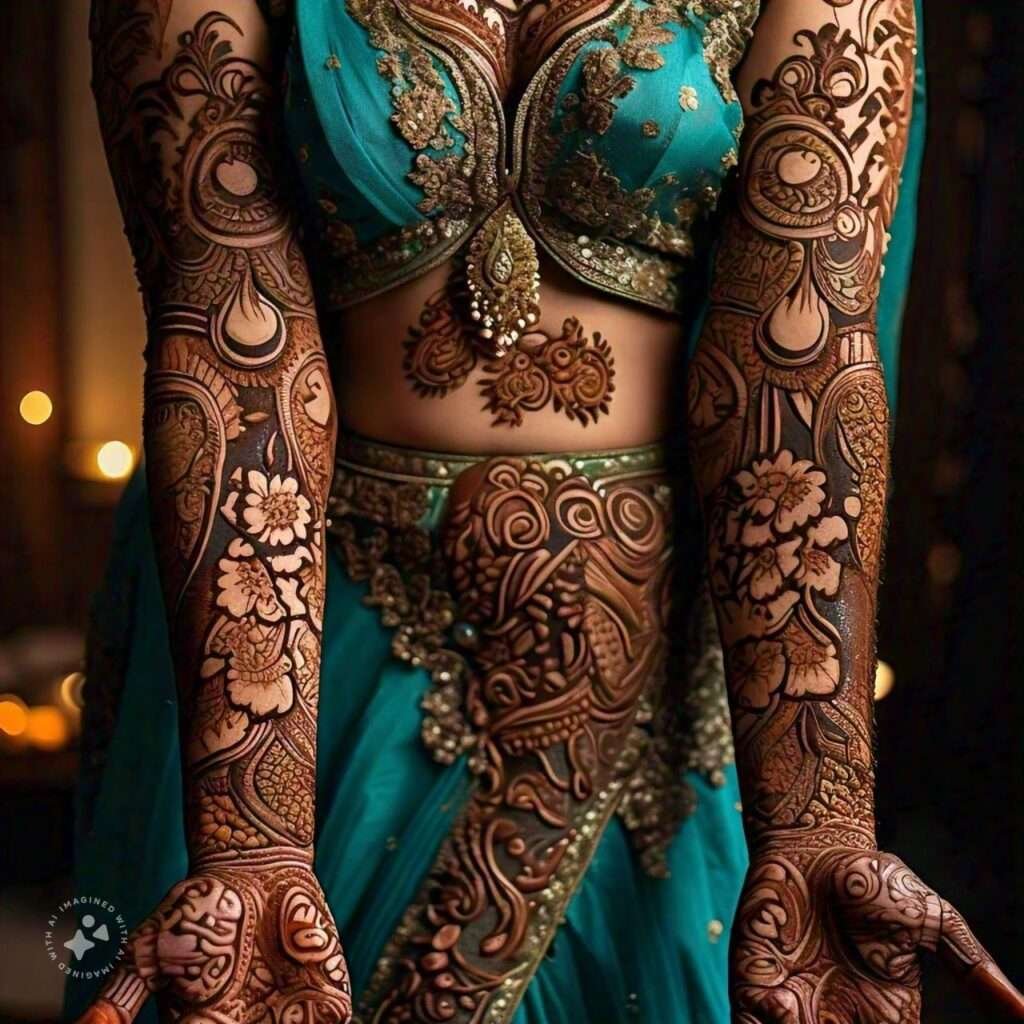




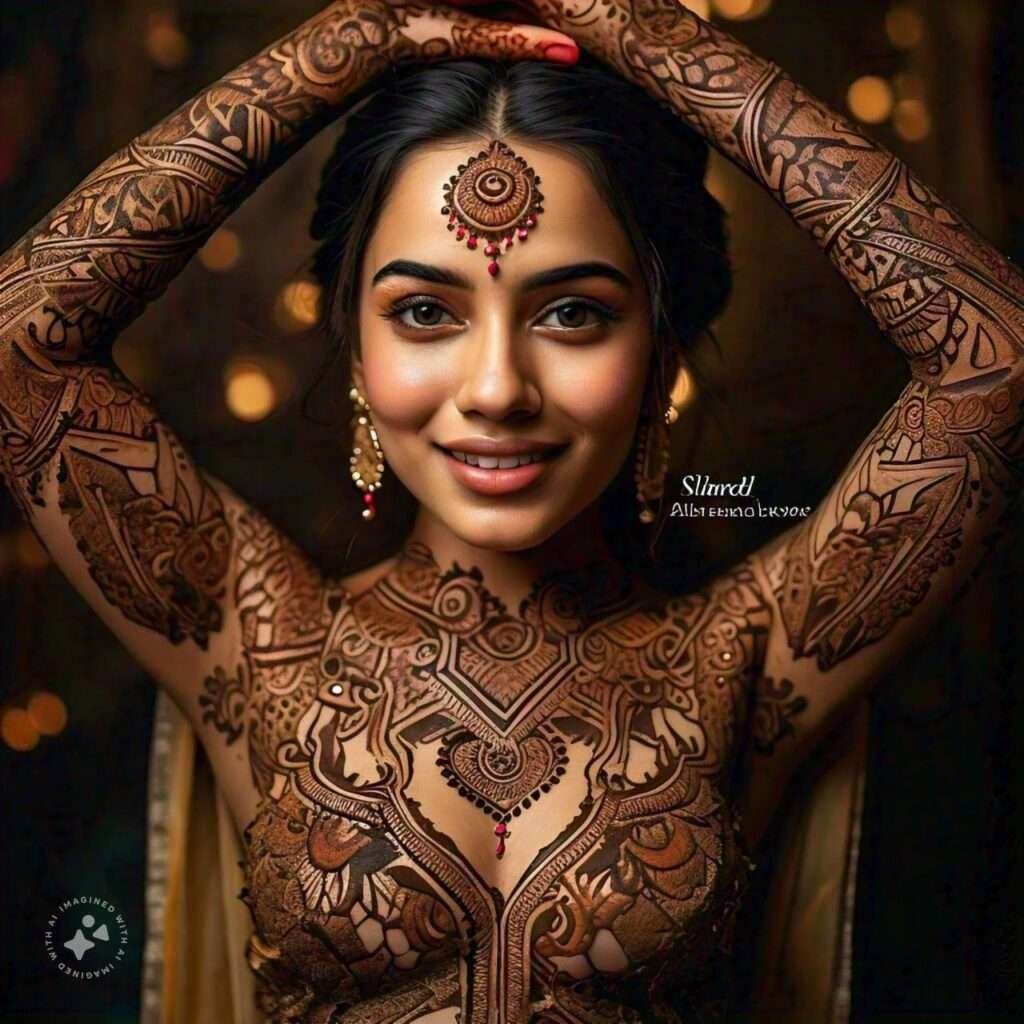



The peacock, a prominent motif in Mehndi designs, symbolizes grace and beauty. In many cultures, the peacock is seen as a representation of love and romance. Its vibrant plumage and elegant demeanor make it a popular choice for bridal Mehndi, signifying the joyous union of two individuals in matrimony. The intricate detailing of peacocks in these designs enhances their beauty, mirroring the happiness and love involved in such celebrations.















Paisleys, characterized by their teardrop shape, are another common pattern in Mehndi art. This design conveys a sense of abundance and fertility. The paisley symbolizes the cycle of life and growth, making it a fitting choice for pregnant women or newlywed brides. Incorporating this design into Mehndi signifies wishes for prosperity and a fruitful future, encapsulating the cultural importance of family and continuation.
Floral patterns also hold special meanings, often representing beauty, love, and femininity. Flowers are associated with the natural cycle of life, embodying growth, renewal, and the transient nature of love. From delicate roses to elaborate lotus designs, each flower tells a story, enhancing the overall sentiment conveyed through the Mehndi. These floral elements are frequently woven into backhand Mehndi designs, enhancing their aesthetic appeal while imparting deeper meaning.
In essence, the common backhand Mehndi patterns serve as a visual language that communicates profound emotions and cultural beliefs. Understanding the symbolism behind these designs enriches the appreciation of Mehndi as an art form, ultimately celebrating the beauty and significance of life’s sacred moments.
Maintaining Your Mehndi: Aftercare Tips
Mehndi designs, particularly those applied on the backhand, can be striking and intricate. To ensure the longevity and richness of these designs, proper aftercare is crucial. Post-application care can significantly affect how well the Mehndi stays vibrant and deepens over time. Here are some essential tips and guidelines to follow.
First and foremost, it’s essential to allow the Mehndi to dry adequately. Avoid contact with water for at least six hours after application. The longer the Mehndi is kept dry, the darker and more intense the color will become. To help set the design further, refrain from washing your hands; instead, gently pat them dry if needed. Keeping the Mehndi on for a longer duration will contribute positively to the overall outcome.
Once the Mehndi has dried, applying a mixture of sugar and lemon juice can enhance the color. This mixture acts as a sealant, helping the design adhere better to the skin while promoting a richer hue. However, be cautious not to overdo it; a light application will suffice. Avoid any products containing alcohol or exfoliants, as these can strip the design of its rich color.
Furthermore, it’s advisable to keep the Mehndi-covered area moisturized after the initial drying period. Natural oils, such as coconut or olive oil, can nourish the skin and prevent excessive dryness, which may cause the Mehndi to fade. However, steer clear of using anything that might contain fragrances or synthetic additives, as these can adversely impact the freshness of the design.
Lastly, exposure to sunlight can bleach Mehndi designs, so it’s wise to cover the area or apply sunscreen if prolonged exposure is unavoidable. By adhering to these aftercare tips, your Mehndi design should retain its beauty and charm for an extended period, allowing you to enjoy the artistry on your backhand to the fullest.
Innovative Trends in Backhand Mehndi Designs
Mehndi, a traditional art form, continues to evolve, reflecting contemporary tastes and preferences. A notable trend in backhand Mehndi designs is the incorporation of glitter and beads, which adds a striking dimension to traditional patterns. These embellishments catch the light and enhance the visual appeal of the intricate designs, making them a popular choice for special occasions such as weddings and festivals. The use of glitter, in particular, allows for the creation of stunning contrasts against the henna’s deep, earthy tones, giving the designs a modern twist while retaining their cultural significance.
Another significant innovation in Mehndi artistry is the blending of colors. Traditionally characterized by deep brown hues, contemporary Mehndi designs now embrace a palette that may include vibrant reds, greens, and even metallics. This multicolored approach offers a fresh perspective and encourages personalization, allowing individuals to tailor their backhand designs to their unique preferences. Color blending not only enhances the aesthetic of the Mehndi but also serves to express individuality, enabling wearers to symbolize their personality through their body art.
Moreover, the minimalist design trend has gained momentum within the Mehndi community, particularly for backhand applications. Minimalism in Mehndi involves the use of fewer elements to create elegant designs that retain cultural essence without overwhelming intricacies. This trend resonates particularly well with a modern audience that appreciates simplicity and sophistication over ornate decorations. Minimalist Mehndi often features geometric shapes, fine lines, and negative space, resulting in an elegant and refined appearance that aligns seamlessly with contemporary fashion aesthetics.
In summary, the innovative trends in backhand Mehndi designs reflect a dynamic blend of tradition and modernity, showcasing the artistry’s ability to adapt while creating captivating aesthetics that resonate in today’s cultural landscape.
Conclusion: The Timeless Charm of Backhand Mehndi Designs
Backhand Mehndi designs have stood the test of time, transcending cultural boundaries and retaining their charm throughout generations. The intricate patterns and elaborate motifs reflect not just a personal aesthetic, but also a deep-rooted cultural significance that enchants those who admire them. Traditionally applied during festive occasions and celebrations, these designs hold a special place in the hearts of many, symbolizing joy, love, and unity among families and friends.
As we explore the world of Mehndi, it becomes clear that this art form isn’t merely about embellishing the skin with beautiful designs; it encompasses a broader cultural narrative that connects individuals to their heritage. Each swirl and curl of the Mehndi is steeped in meaningful symbolism, often representing auspiciousness and protection. Therefore, entrusting the application of backhand Mehndi to skilled artisans ensures that the beauty of this tradition is honored and preserved.




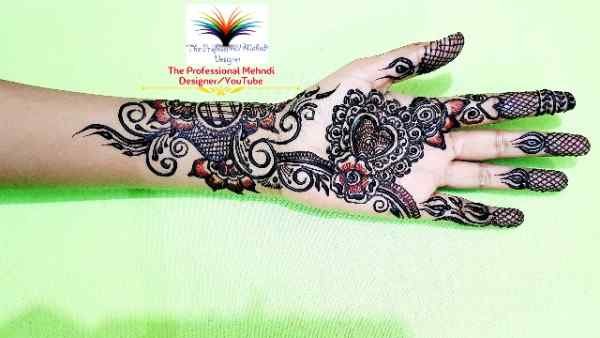



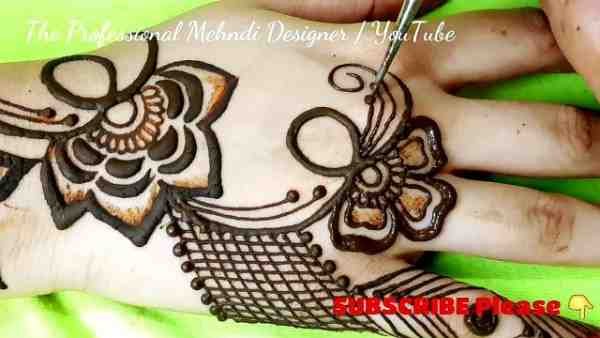





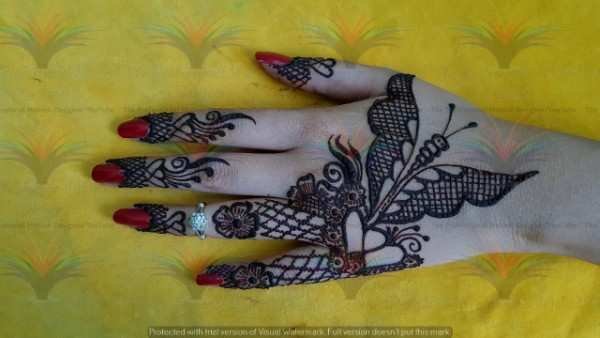



Today, Mehndi designs continue to evolve, adapting to modern tastes while staying true to their roots. This evolution allows individuals to reinterpret classic patterns in ways that resonate with their personal styles, making the art of Mehndi both timeless and contemporary. The blend of tradition and innovation is what breathes new life into backhand Mehndi designs, keeping them significant in a fast-paced world.
In the end, we encourage readers to embrace the artistry of Mehndi and its fascinating cultural significance. By incorporating backhand Mehndi designs into their lives, whether for special occasions or everyday wear, they not only celebrate the artistry but also contribute to the preservation of this beautiful tradition. The enduring allure of backhand Mehndi designs is waiting to be experienced and cherished, inviting everyone to partake in this magnificent art form that continues to inspire and captivate.
Simple Mehndi Designs Explore a stunning collection of unique and intricate mehndi designs, meticulously crafted for every special occasion, to beautifully adorn your hands and feet.

